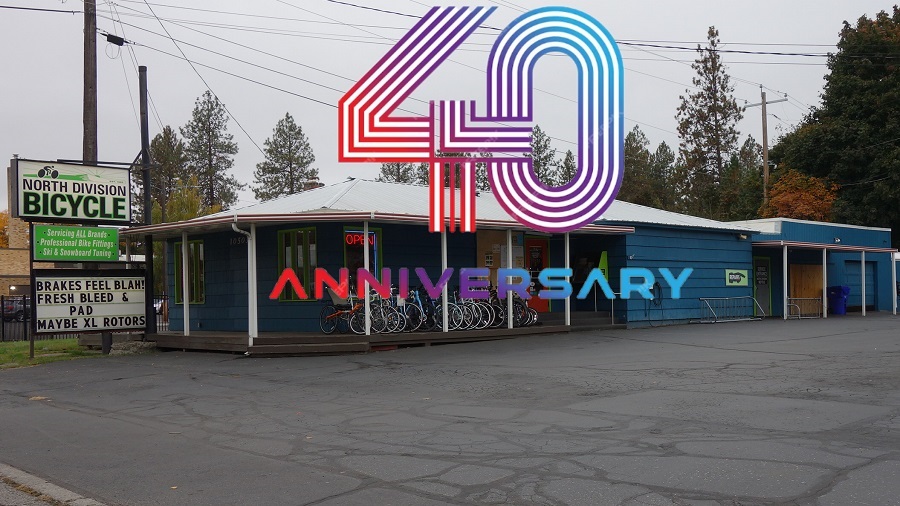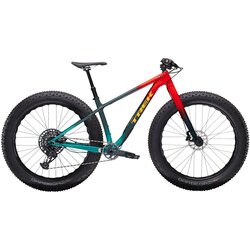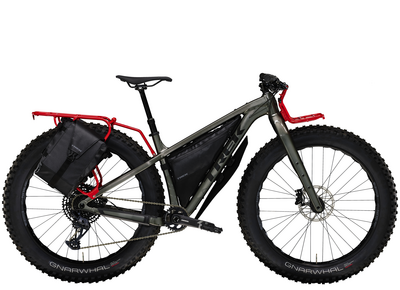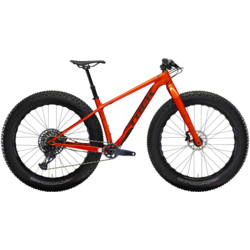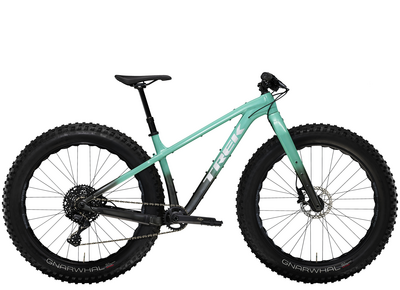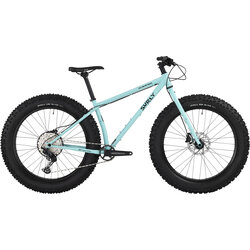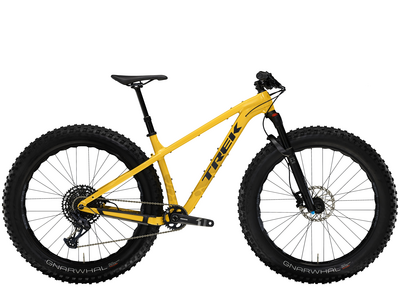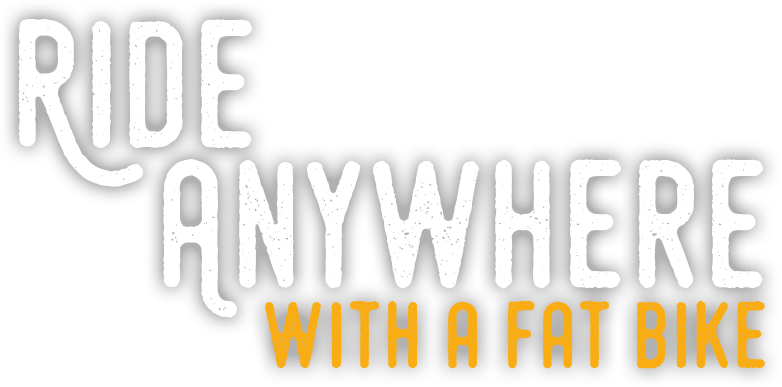


A True All-Terrain Bike
Fat bikes are off-road bikes that feature wider tires, traditional mountain bike geometry, and durable components so that you can have fun on the trails (or in the woods or on the beach) all year long. If you're looking for a four-season freedom machine that lets you ride outside no matter what the weather or terrain, a fat bike is the perfect bike for you.
Shop Fat Bike Apparel
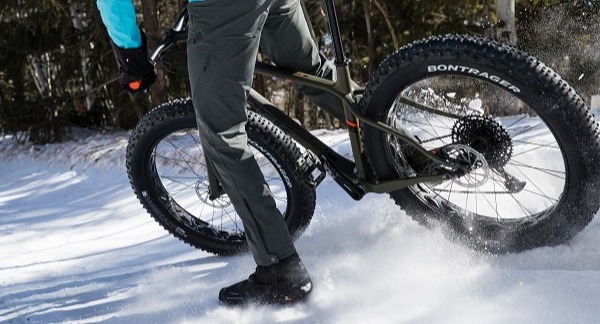
Bigger wheels & Tires
Enjoy superior traction with big, fat tires. These bikes are typically equipped with 4.8 inch or 3.8 wide tires, and are designed to support lower pressure (10 to 3 psi.) for better surface contact. What that means for you is unparalleled traction and stability in soft, sketchy terrain such as snow, sand, mud, and loose gravel. Lowering pressure allows better grip on softer surfaces. High pressures reduce the pull on handlebars when there is a lower pressure tire and higher pressure surface.
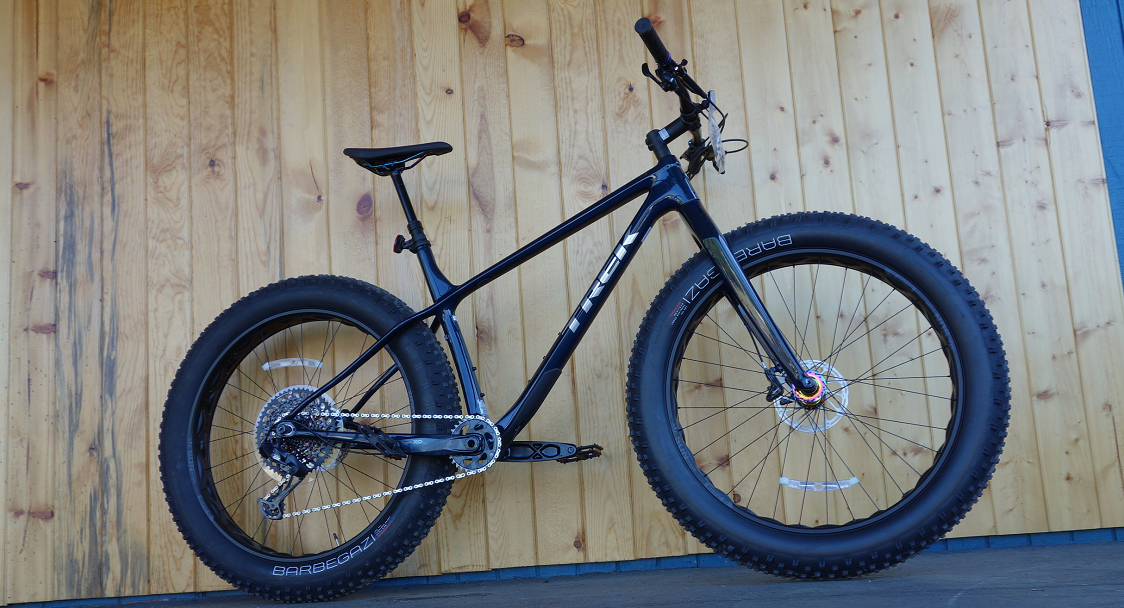
Remarkable Versatility
The conditions that a fat bike can handle aren't the only thing that makes this bike category so versatile. Fat bikes come in a variety of frame materials, include carbon fiber and aluminum with a range of component groups and one with a suspension fork. Explore our selection online and visit us today to find the fat bike that's right for you.
Pictured: Farley 9.6, size medium and large in stock. Sold out everywhere.
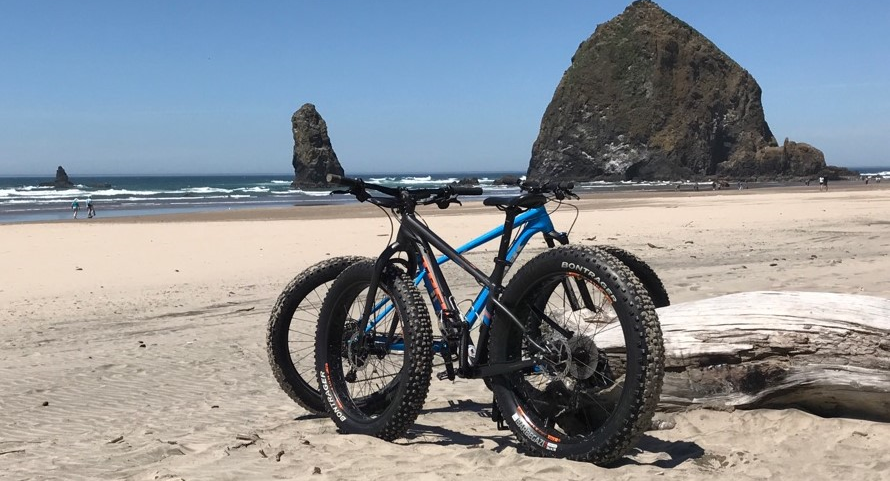
Handle Anything, Anywhere
If you're thinking that a bike designed with giant tires is going to feel sluggish under you, come in and try one out - we know that you'll be pleasantly surprised. Super low stand-overs makes it easy to get on when the snow is deep. Fat bikes feature compact geometry that is characteristic of a traditional trail bike, ensuring that you don't compromise handling or responsiveness as you're out playing in the rain, snow or on a coastal beach. Be careful to know when the tide is coming in, you can get trapped in a cove.
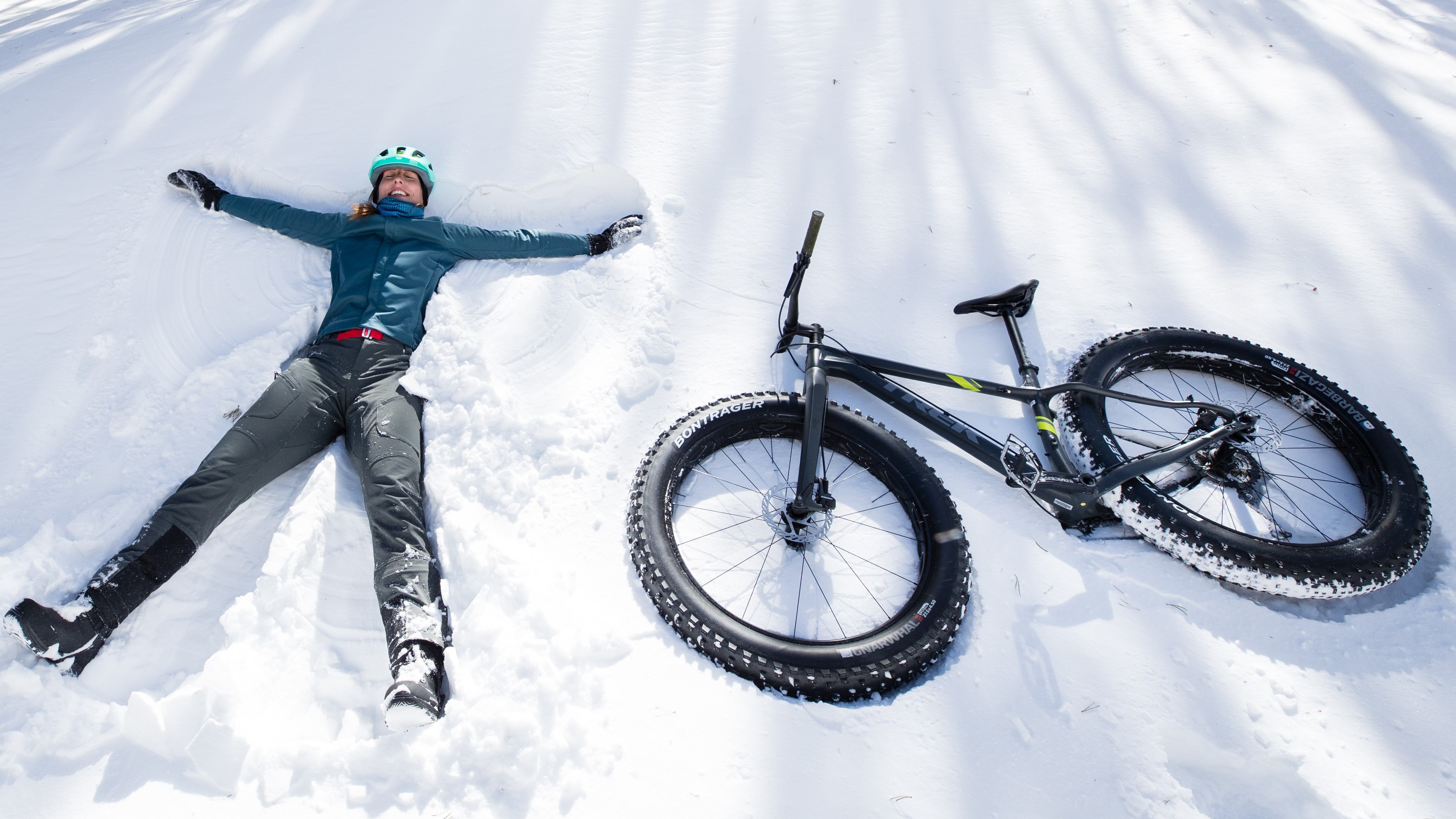
Cold Weather Clothing Advice
It is going to take a few rides to figure what works for you. First layer is the base layer next to skin. Wool is your best choice for the upper body and a padded cycling short for the lower body. Next is a long sleeve jersey. We recommend owning a light and a heavy weight jersey. Legs have a wider hot temperature range. A thermal tight works great most of the time. Outer-layer is last. A wind breaker, soft shell or rain coat for tops and bottoms. You will want all 3 to be ready for the conditions. Wind breaker for the warmer conditions. The wind breaker can be worn between jersey or on the outside of jerseys. For colder temps the soft-shell really warms thing up. Most time you won't need more than a base-layer under a soft-shell. Rain gear is only needed for when it is raining or wet outside. Rain gear is good if the tree are wet dripping or covered with snow also. Cause if your leading, you dragging all the moisture off the trees. You may want to wear rain if you crash a lot to stay dry.
Scott Willegalle
